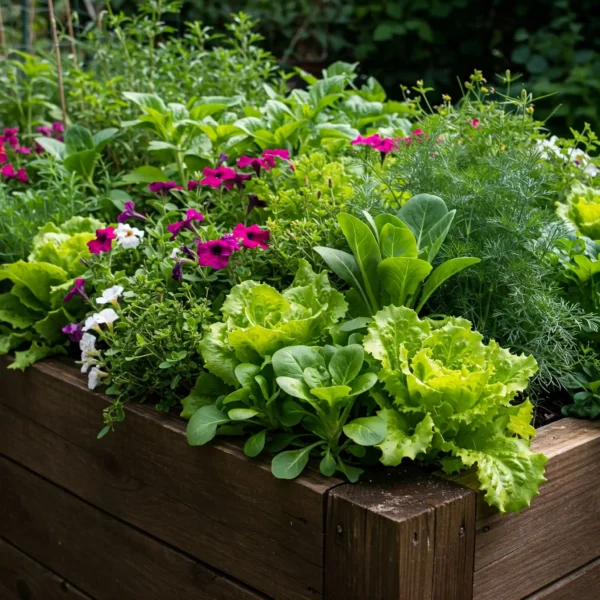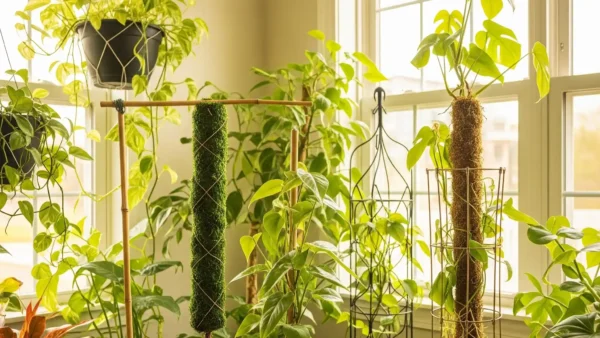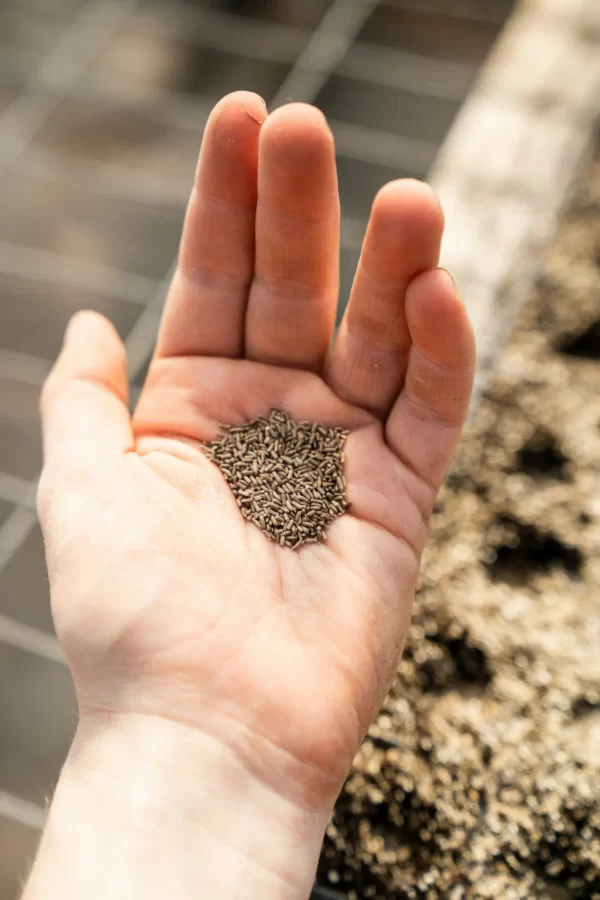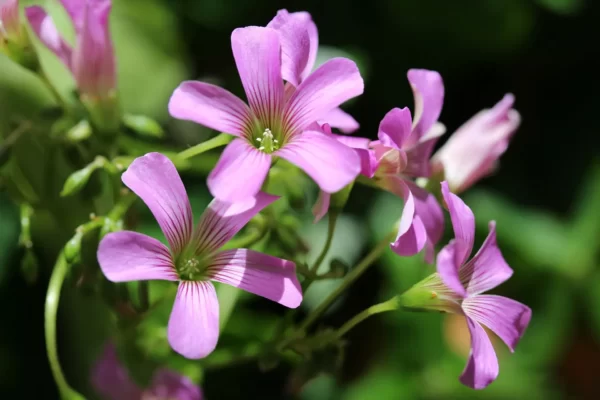The Best Way to Use Hygrometers to Measure Humidity Levels for Healthy Houseplants. Stop making guesses and start growing!
Hey there, fellow plant lover! Are you doing everything you can to make your houseplants happy, giving them lots of attention, but still dealing with those annoying crispy leaf tips? Or maybe you’re carefully watering and grouping your plants and wondering if the extra humidity is really helping? Here’s a little secret: you can’t just guess how much moisture is in the air in your home!
What is Measuring Humidity Levels (Hygrometers) for Houseplants all about, and why am I so pleased to tell you about it? Using a cool little gadget called a hygrometer to acquire an exact reading of the moisture content (the humidity) in the air in your home, especially where your plants live, is a simple yet game-changing thing to do. This information is worth its weight in gold! It gives you the power to really comprehend the real environment of your plant and make smart, effective choices to give them the best circumstances for growth. We can’t trust how the air feels to us to tell us how humid it is for our plants.
This guide will make hygrometers absolutely clear. I’ll show you how to pick the best one for your needs, how to operate it correctly (it’s really easy, I promise!), and most importantly, how to read those small numbers to help your leafy buddies right away. Are you ready to become a humidity detective and provide your plants the exact, comfy space they need? Let’s go on an adventure together in the amazing world of hygrometers!
Why “Knowing Your Humidity Number” is a Game-Changer for People Who Grow Plants
Before we get into the “what” and “how” of hygrometers, let’s talk about why understanding how much moisture is in your home is so important. It all comes down to providing your plants what they really need, not just what you believe they need.
To sum up, most of our favorite houseplants, especially the beautiful tropical ones, do best in places with more humidity than the ordinary home. Our modern homes can be unexpectedly dry, even though they have central heating in the winter and air conditioning in the summer.
Low humidity is often to blame for:
- Those awful, brown, crispy edges and tops of leaves.
- Growth has slowed or stopped.
- An increased risk of getting some pests, including spider mites, who love dry weather!
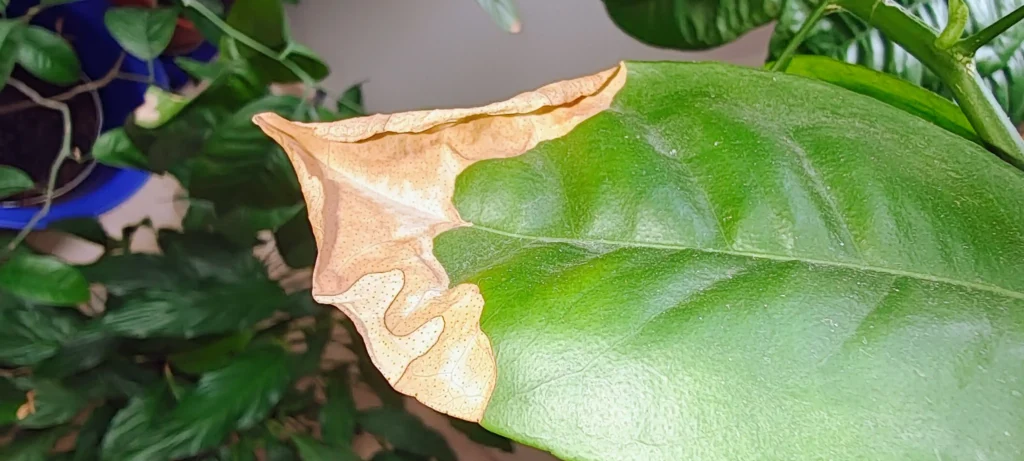
On the other hand, too much humidity inside can occasionally cause fungal problems, especially if there isn’t enough air flow.
The main thing to remember is that using a hygrometer to measure things correctly lets you:
- Objectively check to see if the humidity in your home is right for the plants you have.
- Find out if your efforts to raise the humidity, including misting, setting up pebble trays, or running a humidifier, are indeed working and by how much they are rising the levels.
- Make specific changes to the microclimate in different parts of your home so that different types of plants can thrive there.
- Stop problems before they happen. This will make your plants healthier, happier, and stronger.
A little story: It’s like attempting to bake a great cake without measuring cups or spoons. You might get fortunate and it turns out good sometimes, but if you want to be sure to get it right every time, you need to know how much of each ingredient to use and be exact! Your plant’s habitat is the same.
So, how can we figure out what the actual humidity level is if it’s so vital for taking care of our plants? The hygrometer is our reliable little environmental detective!
What is a hygrometer, and how does it work?
Let’s formally meet this really essential item. A hygrometer (pronounced hy-GROM-uh-ter) is a tool that measures how much water vapor is in the air. In more detail, it measures the relative humidity (RH).
How it Works (I Promise It’s Simple!):
You don’t need to be a physicist to get the essentials! The relative humidity (RH) tells you how much moisture is in the air right now compared to the most moisture the air could contain at that temperature. It is always shown as a percentage (%). If your hygrometer says 50% RH, for instance, that implies the air is holding half of the maximum amount of water vapor it can hold at that temperature. Relative humidity can alter even if the amount of water in the air stays the same because warmer air can contain more moisture than colder air.
Why It’s the Best Friend of a Plant Parent:
I really think that a good hygrometer is an essential tool for serious plant caregivers, and here’s why:
- It makes managing humidity easy. You won’t have to ask, “Is it dry in here?” anymore.
- It gives you real, useful information to help you make decisions about how to care for your plants.
- It helps you learn about the numerous microclimates that can be found in different rooms or even in different parts of the same room in your house.
- They don’t cost much and are quite simple to use.
Now that you know what a hygrometer is, you’ll be happy to know that there are a few different kinds. Let’s look at the different kinds so you can pick the ideal one for your needs and budget.
How to Use Hygrometers to Keep Your Houseplants Healthy: A Step-by-Step Guide
Okay, let’s get to the point! It’s easy to pick out and use a hygrometer, but here are some important suggestions to make sure you obtain the most accurate and helpful information for your plants.
What kinds of hygrometers do you have?
There are usually three primary types of hygrometers that you will come across:
- Hygrometers that use analog signals:
- These are the more “old-school” kinds. They generally use a mechanical coil or even a natural hair element (like human or animal hair) that expands and contracts when the humidity changes. This moves a needle on a dial.
- Pros: You don’t require batteries, which is a plus! Some people also like how they seem in a classic way that is attractive to the eye.
- Cons: They are usually less accurate than digital ones and may need to be calibrated (adjusted for accuracy) more often. It can also be a little harder to interpret exact percentage numbers from a dial.
- Digital Hygrometers:
- These are undoubtedly the most popular choice for people who live at home and take care of plants. They have electronic sensors that monitor humidity and show the results on a vivid digital screen.
- Pros: Digital versions are usually more accurate than analog ones. The digital display is very easy to read, and many of them come with a built-in thermometer (making them a “thermo-hygrometer”), which is particularly useful because temperature and humidity are closely linked. Many digital versions also feature memory functions that let you see the lowest and highest humidity and temperature readings over a certain time period. This is helpful for keeping track of changes. Also, they can be very cheap.
- Cons: They need batteries, which will need to be changed at some point.
- Smart Hygrometers:
- These are basically digital hygrometers that can link to your smartphone or other smart devices, usually over Bluetooth or Wi-Fi.
- Pros: You can check the temperature and humidity of your plants from anywhere using an app (so you can check on them even when you’re not home!). They often keep track of data and make graphs so you can see how things change over time. They can also send you alerts if the temperature or humidity goes outside of your desired range. Some of them can even work with other smart home devices, like a smart plug connected to a humidifier.
- Cons: They are usually more expensive than basic digital ones, and you need an app and a stable internet or Bluetooth connection to activate their smart capabilities.
How to Choose the Right Hygrometer for Your Needs:
With these sorts in mind, here are some factors to think about while choosing your hygrometer:
- Accuracy: Look for models that say how accurate they are. For most home and plant uses, an accuracy of about +/- 2% to 5% RH is good enough.
- Readability: Make sure the display is clear, big enough, and easy to read at a glance.
- Features: Do you only require a simple humidity reading, or will a thermometer, min/max memory function, or smart features be helpful?
- Price: Prices can be considerably different, from very cheap basic digital units to more expensive sophisticated hygrometers. The good news is that you can acquire a digital hygrometer for plants that is quite accurate and trustworthy without spending a lot of money.
This is really important: putting everything in the right place for accurate readings.
The results you obtain from your hygrometer depend a lot on where you position it. Here’s how to put it in the right place:
- Near Your Plants: This might seem simple, but put the hygrometer where your plants live, at about the same height as their leaves. Even a few feet distant, the humidity might change.
- Not in Direct Sunlight: The hygrometer can heat up in direct sunlight, which can change the readings of both temperature and humidity, giving you a false impression.
- Keep it away from direct heat/cool sources or moisture sources. Don’t put it right next to radiators, heating vents, air conditioning units, open windows with strong drafts, or directly in the mist stream of a humidifier or near a steamy shower (unless you want to measure the output zone of your humidifier).
- Give it Time to Adjust: When you first obtain your hygrometer or transfer it to a new place, let it sit for at least 15 to 30 minutes (some suggest up to an hour or two for optimal results) so it can get used to the new environment before you take a reading as final.
- Think about using more than one hygrometer. If you have plants in various areas (like a bathroom and a living room) or even in different microclimates within the same room (like a sunny windowsill and a shadier corner), utilizing more than one hygrometer can provide you a lot of information. You might be shocked at how different the humidity levels can be in different parts of your home!
How to Understand and Read the Numbers:
Just glance at the display after your hygrometer has stabilized. It will display you the proportion of relative humidity (%RH). For instance, “45%” signifies that the air is 45% full of moisture at the temperature it is now. After that, you’ll need to see how this reading compares to the best humidity range for your plants. Most tropical houseplants like humidity levels between 40% and 60% RH. Some, like calatheas and ferns, like it even more at 60% to 70% RH. On the other hand, succulents and cacti are normally happy with lower levels, about 30% to 40%.
You have your beloved hygrometer, you’ve put it in the right spot, and you have a reading. What do I do now? That number is simply the start of your effort to control the humidity...
Using Your Hygrometer Readings to Make a Plant Paradise: From Data to Action
This is where the magic takes place! Your hygrometer reading tells you what to do to make the best atmosphere for your plants.
If your hygrometer says the humidity is too low (which happens a lot),
Let’s say your hygrometer in your living room, where your favorite fiddle leaf fig dwells, says that the air is very dry at 30% RH. This is your sign! It’s time to use the methods we’ve talked about in prior tutorials to raise the humidity.
- You might think, “It’s time to turn on the humidifier I bought!” or “I should put my calathea with some other plants,” or “Let me put some pebble trays under these ferns.”
- The great thing about the hygrometer is that you can use it to see how well these strategies work. You may, for instance, turn on your humidifier, wait an hour, and then look at your hygrometer again. “Yes! It now shows 50% RH near my plants, which is perfect! The humidifier is working.”
If your hygrometer says the humidity is too high (this is less common inside, but it can happen):
Most homes with central heating and cooling don’t have this happen very often, but it can happen. For example, it could happen in a small, poorly ventilated bathroom or if you had a humidifier running all the time in a room that is well-sealed.
- If your hygrometer is always reading 75–80% RH and you see indicators like mildew on soil or fungal spots on foliage, it’s time to boost airflow (maybe with a small fan or by breaking a window if the weather allows) or turn down the humidifier.
Keeping an eye on changes throughout the day and the seasons:
- Watch how your humidity levels vary. When your central heating comes on in the winter, you could notice that the humidity reduces a lot. If your plants are in or near the bathroom, you might also note that the humidity goes up after a shower.
- If your hygrometer can show you the minimum and maximum readings, this is a great way to see how much humidity your plants get over the course of a day.
Learn about the many areas of your home:
- As we said before, utilizing your hygrometer in different places can show you different microclimates. A bathroom with a lot of steam might naturally keep the humidity level at 60%, which is great for your ferns. However, in the winter, a sunny living room with a fireplace might have a dry 25% RH, which means that plants there will require a lot of extra humidity. This information helps you choose the optimum spots for your plants to grow.
Changing Based on the Type of Plant:
- Use your hygrometer to make the environment just right for each plant. “My fern’s corner is at a nice 55% RH, which is great! My succulent’s spot on the sunny windowsill is at about 40% RH, which is also fine for it.”
Like any good tool, hygrometers can sometimes have their own problems or questions. Let’s talk about a few typical ones to help you feel better.
Hygrometer Housekeeping: Frequently Asked Questions and Fixes
Sometimes even basic gadgets can make you think. Here are some things to remember about your new humidity detective:
How Reliable Are Home Hygrometers, Really?
- Most digital hygrometers that you can buy for home use are accurate enough for our needs. They usually say they are accurate to within +/- 2% to 5% RH. You don’t normally need to be as precise as a scientific lab when taking care of plants.
- Consistency and recognizing the trends are often more important than being perfectly accurate. If your hygrometer usually reports 5% lower than it really is, you can still use it to see if your humidity is going up or down when you make changes.
Do I have to calibrate my hygrometer?
- It is possible that analog hygrometers (the ones with a needle) need to be calibrated every so often to keep them accurate. The “salt test” is a common DIY method. You can easily find instructions online. It entails putting the hygrometer in a sealed bag with a certain amount of salt slurry that makes a known humidity level and then changing the hygrometer if necessary. Always read the instructions that come with the product first.
- Most digital hygrometers come from the factory already calibrated and don’t let users calibrate them. They are usually very steady, but their precision can sometimes shift a little over a lengthy period of time.
- Put all of your hygrometers in the same position for an hour or two (after they’ve all become used to it) and observe how their readings compare. This is a good approach to check for consistency. If one is very different from the others, it might not be as reliable.
Battery Life (for Digital Models):
- This changes a lot depending on the model and how often the screen updates. Most of them will work for many months, if not a year or more, on one battery. It’s always a good idea to have an extra battery on available. Most of the time, they use regular button cells or AAA batteries.
What if my hygrometer readings are far off or all over the place?
- If it’s a digital model, the first thing to do is check the battery. A low battery is a common cause of weird results.
- Make sure it’s in the right spot. Is it in bright sunlight, near to a heat source, or getting blasted by an AC vent? Put it in a place that is less biased.
- If you just moved it, give it a lot of time to become used to its new home.
- If the device is old and has been dropped or subjected to extreme conditions, its sensor may be broken, which is terrible.
With these helpful hints, you’ll be able to keep your humidity detective in great shape, giving you the information you need every time. Let’s go over why this little item is so important for your plants one more time.
Conclusion: Use a hygrometer to give your plant care more power!
We’ve traveled through the world of measuring humidity, and I hope you’re enthusiastic and ready to go! A hygrometer is a simple tool, yet it gives dedicated plant parents information that is truly priceless.
Measuring humidity levels (hygrometers) for houseplants is no longer something only the most knowledgeable people or botanical gardens can do. It’s now something that any plant parent who wants to go from hoping to knowing they are giving their plants the best possible conditions can do. This information really helps plants grow better and makes you, the plant parent, more confident and successful.
So, trust your hygrometer and the data, and get ready to see your indoor garden grow like never before as you carefully adjust its climate. You can do this!
Are you already using a hygrometer for your plants? What was the most shocking thing you discovered from its readings? If you haven’t met them yet, what are you most looking forward to learning about them? Please leave a comment below with your thoughts and questions!
FAQ: Quick answers to your hygrometer and humidity questions
When we talk about hygrometers and measuring humidity for our green friends, these are some of the most typical questions that come up:
What should the humidity level be for my houseplants to be happy?
It truly depends on the plant! Many common tropical houseplants, such as ferns, calatheas, and monsteras, do well in 40–60% RH. Some plants that really appreciate humidity do even better in 60–70% RH or more. On the other hand, cactus and succulents are usually content with lower humidity, approximately 30–40% RH. The most important thing is to learn about the needs of your plants.
Can I just utilize the outdoor humidity data from the weather app for my indoor plants?
Sadly, no. The humidity indoors is typically significantly different from the humidity outside. Heating systems in the winter, air conditioning in the summer, and less natural ventilation than the vast outdoors make our homes significantly drier most of the time. Always measure close to your plants.
How fast does the humidity change inside?
It might change very quickly! You may instantly lower the humidity by turning on your central heating or air conditioning. It will go up if you open windows, take a shower in a neighboring bathroom, or use a humidifier. That’s why it might be quite helpful to keep an eye on the hygrometer all the time or at least check it at different periods of the day.
Do more expensive hygrometers usually work better or more accurately?
Not always. Many cheap digital hygrometers are surprisingly accurate and work well for taking care of plants and your home. More expensive models may have extra capabilities, like data logging, smart connectivity, or a somewhat tighter accuracy tolerance. However, a simple, trustworthy digital device is a great place to start and is typically all you need.
My hygrometer also tells me the temperature. Is that something else you should pay attention to?
Yes, for sure! We spoke about how temperature and humidity are closely related since relative humidity depends on temperature (heated air can contain more moisture). If you know both the temperature and the humidity, you may get a far better idea of what your plant’s real habitat is like. Most decent digital hygrometers are actually “thermo-hygrometers,” which means they measure both.


